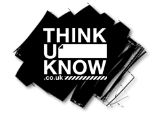Online Safety
| RISKS | |||
|---|---|---|---|
| COMMERCIAL | AGGRESSIVE | SEXUAL | |
| CONTENT: Child as recipient | Adverts, Spam, Sponsorship, Personal Information | Violent or hateful content | Pornographic or unwelcome sexual content |
| CONTACT: Child as participant | Tracking, Harvesting, Personal Information | Being bullied, harrassed or stalked | Meeting strangers, Being groomed |
| CONDUCT: Child as actor | Illegal downloading, Hacking, Gambling, Financial scams, Terrorism | Bullying or harassing another person | Creating and uploading inappropriate material |
Children are keen to explore the online world but are often not mature enough to manage or understand the risks they come across. Helping your child to manage these risks at home can be achieved by asking your child
- Where they are going and what they see? - this will help you talk about content risk.
- What they do online? - this will help you understand any conduct risks and see whether they are chatting on anonymous sites or posting comments about themselves.
- Who they are talking to? - this will help cover the contact risks, particularly if their online friends are people they do not know offline.
It is essential to be realistic - banning the internet or technology will not work and it often makes a child less likely to report a problem.
Education around the safe use is essential.
Parent and Carer Advice and Support
CEOP (The Child Exploitation and Online Protection Centre) delivers a multi-agency service dedicated to tackling the abuse and explotiation of children in the real and online world. It is often referred to as the online 999. By clicking on the button, young children and parents can get advice on a range of issues such as viruses, hacking and dealing with bullying online.
Age Restrictions for Social Media Platforms

Please click on the links below to find specific advice about devices and apps etc.
Paper copies of information on the school website can be obtained upon request.

